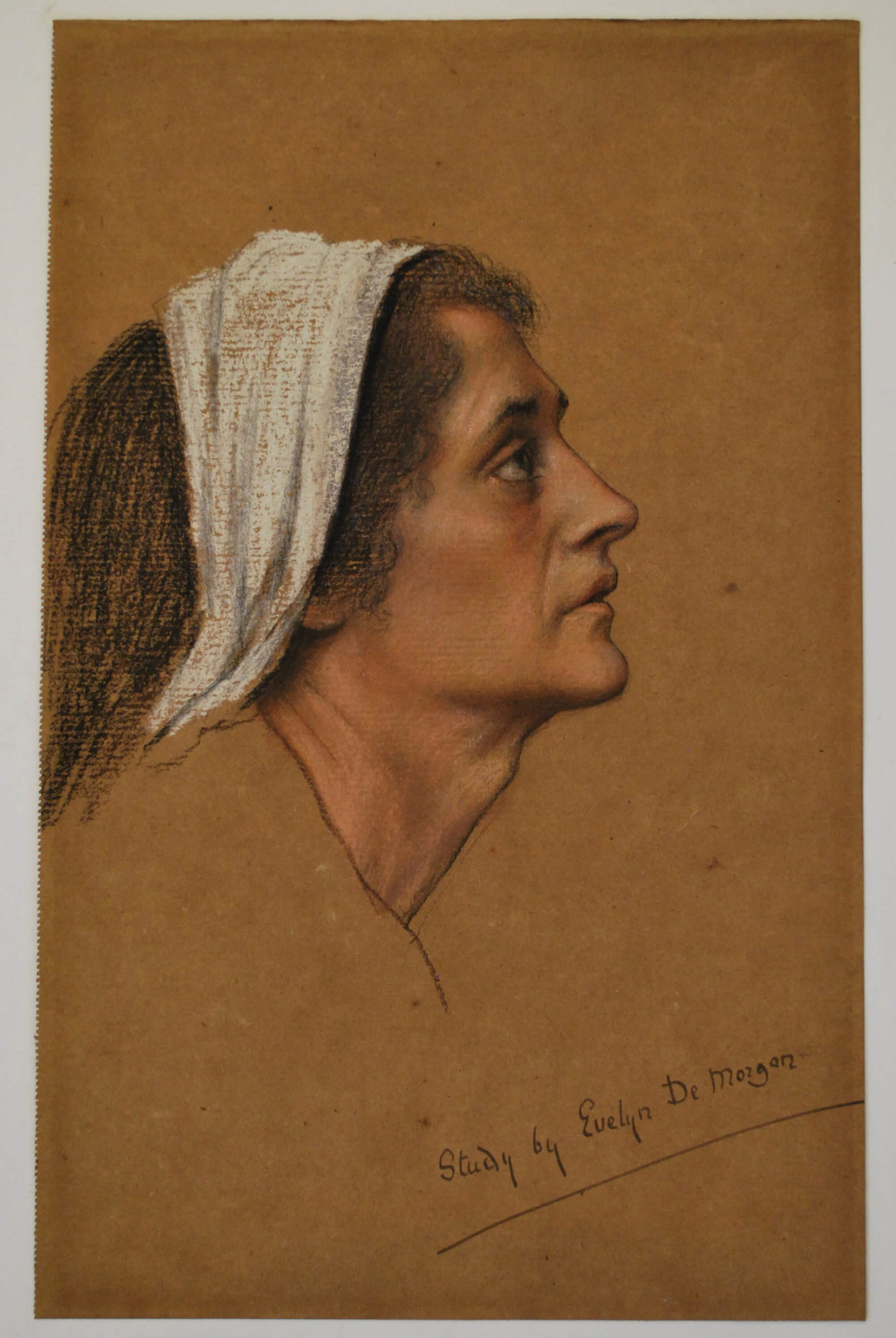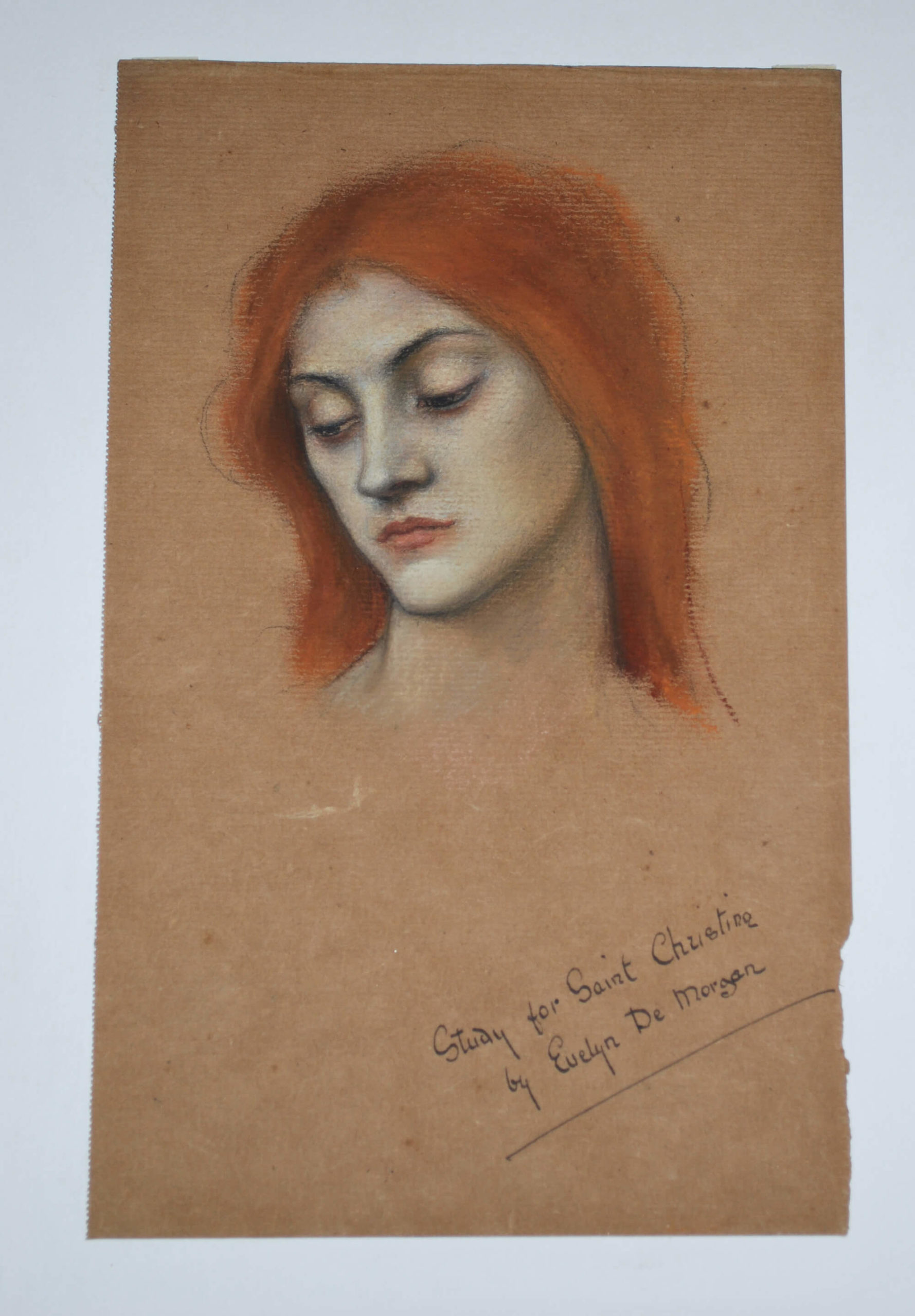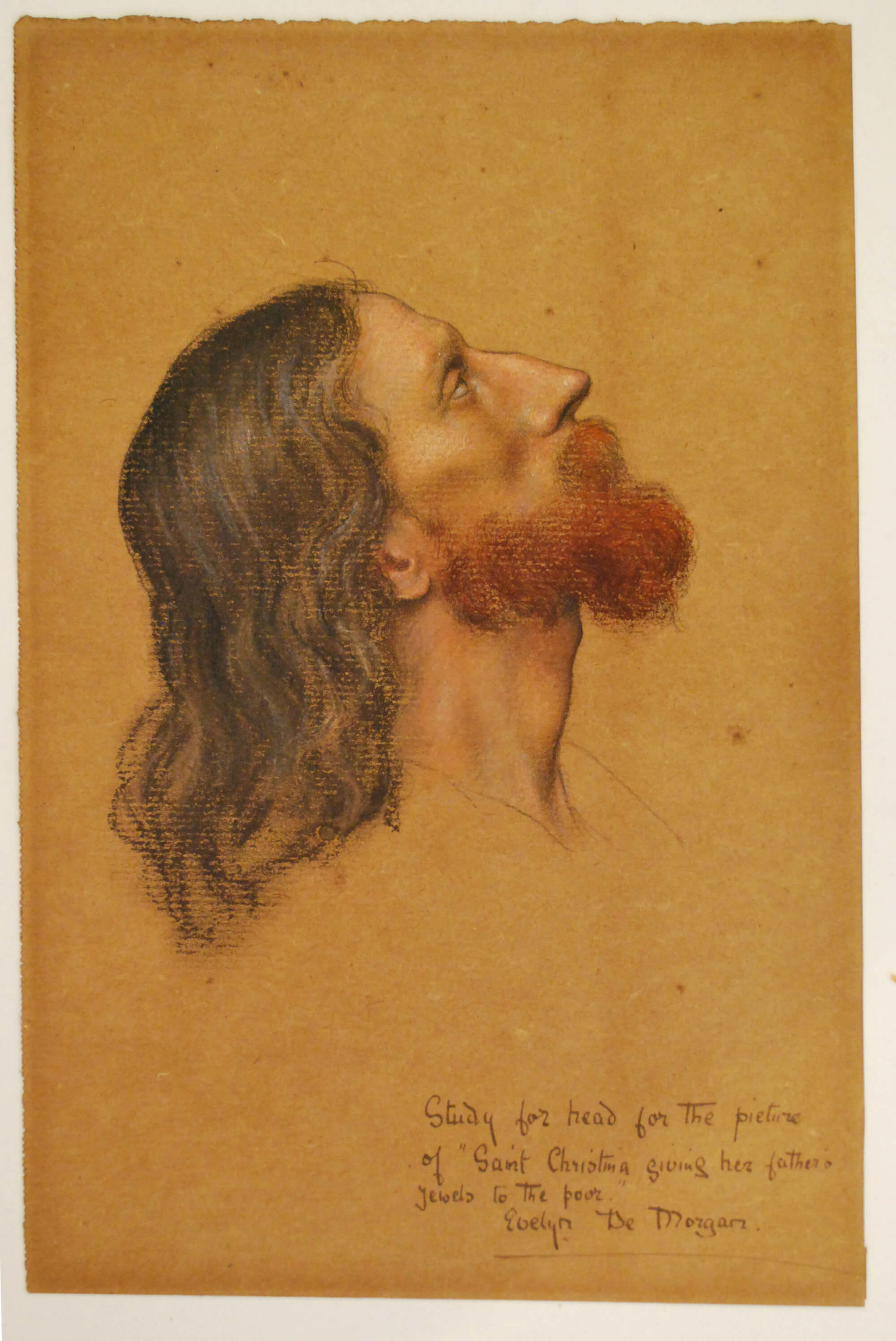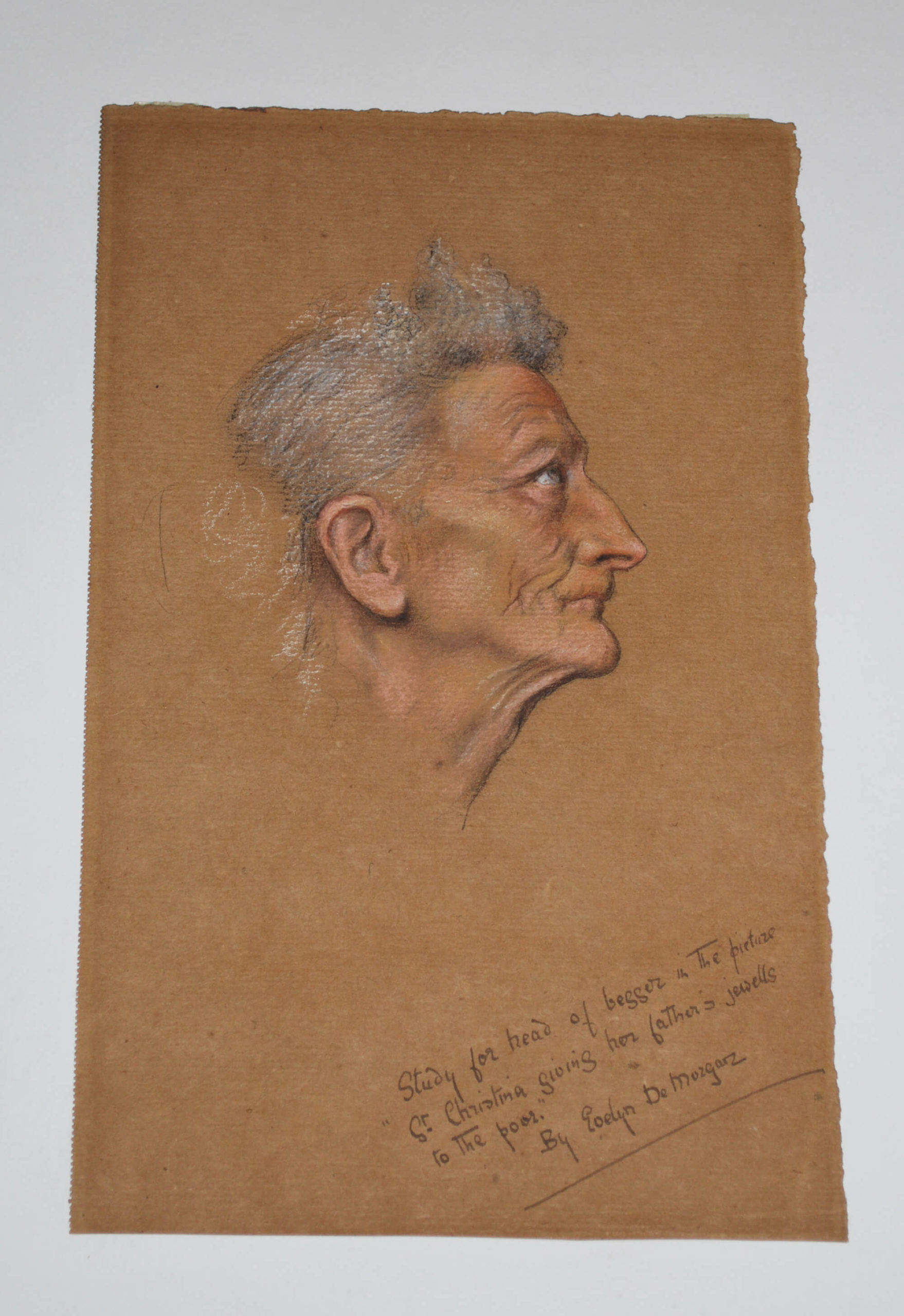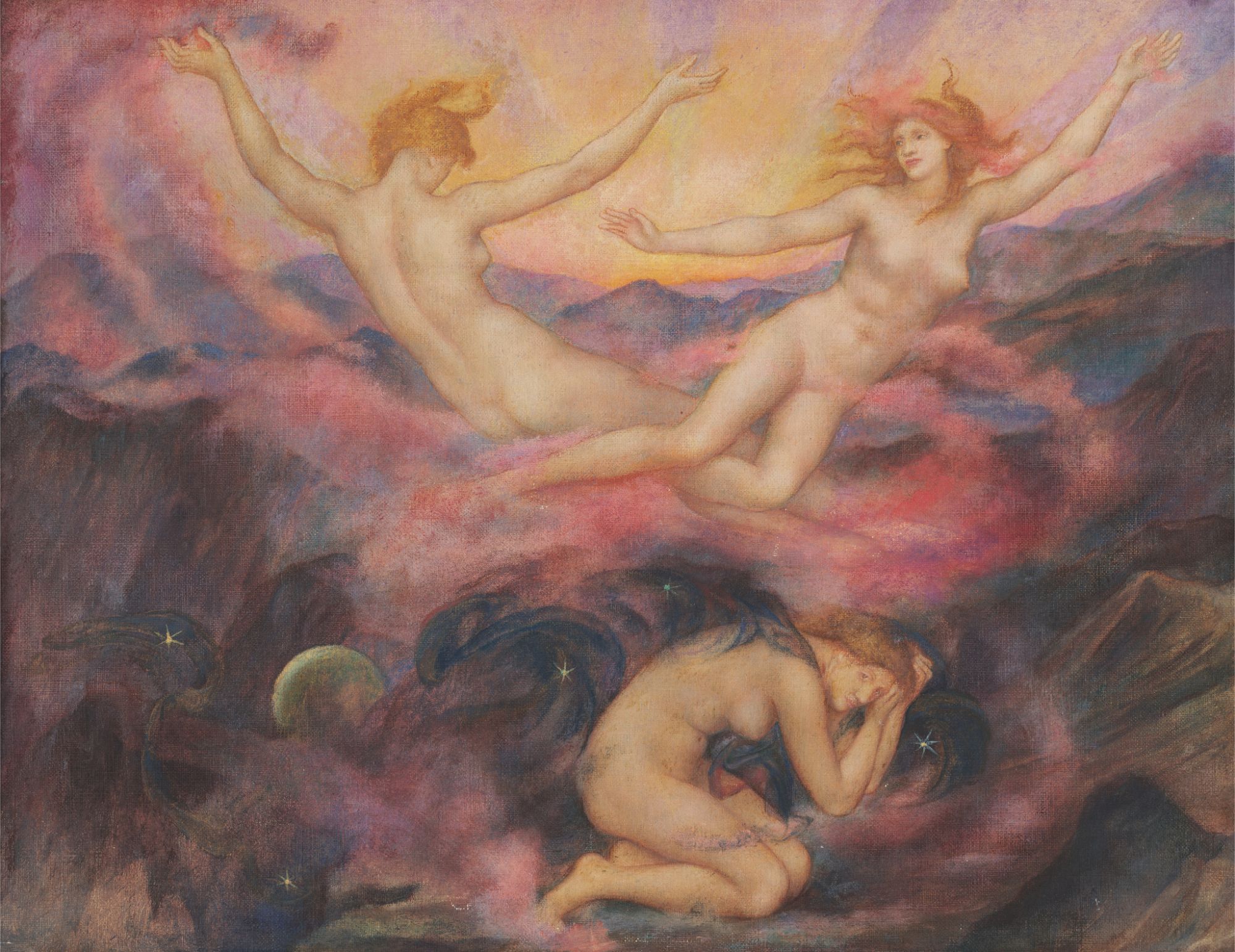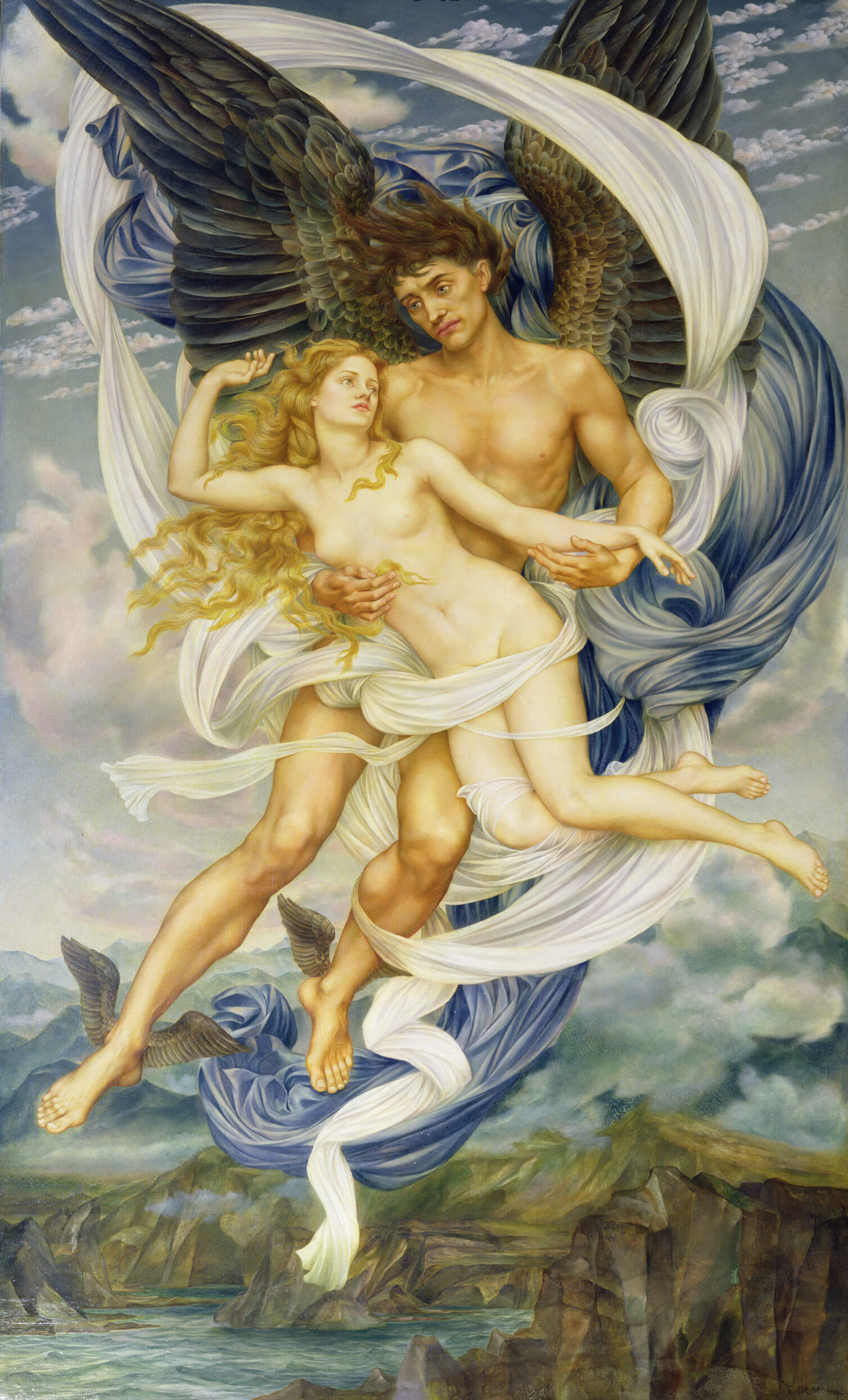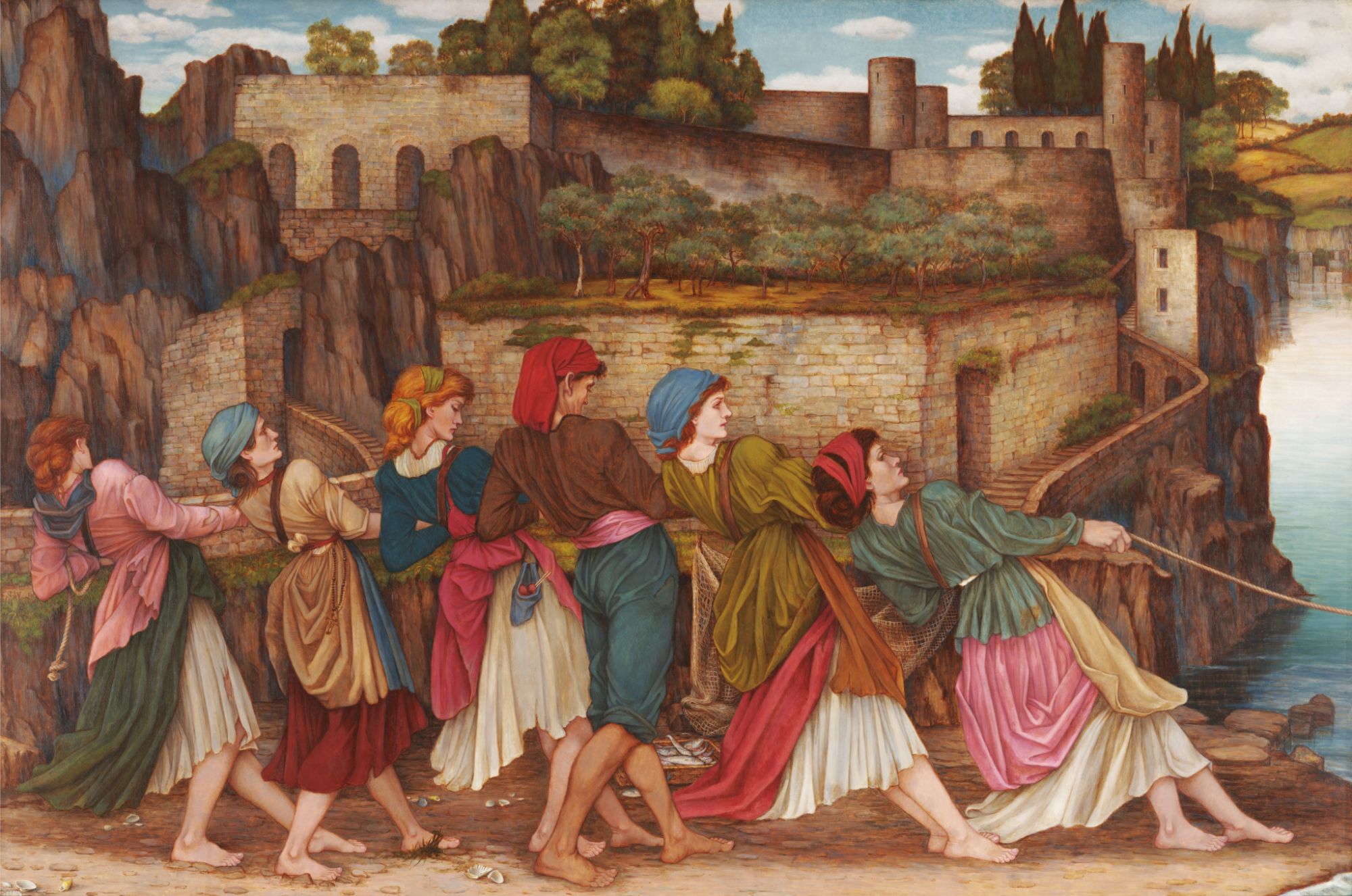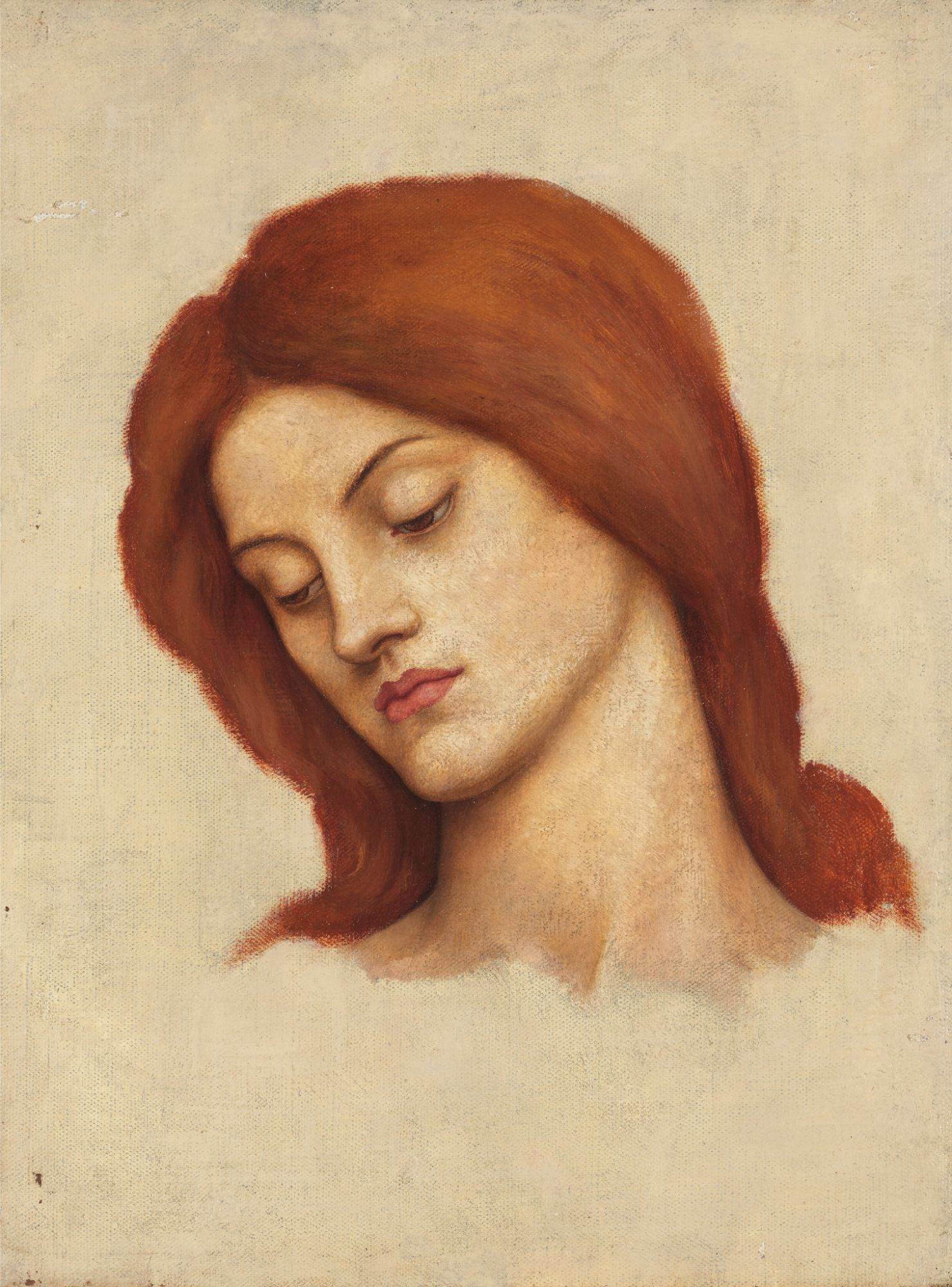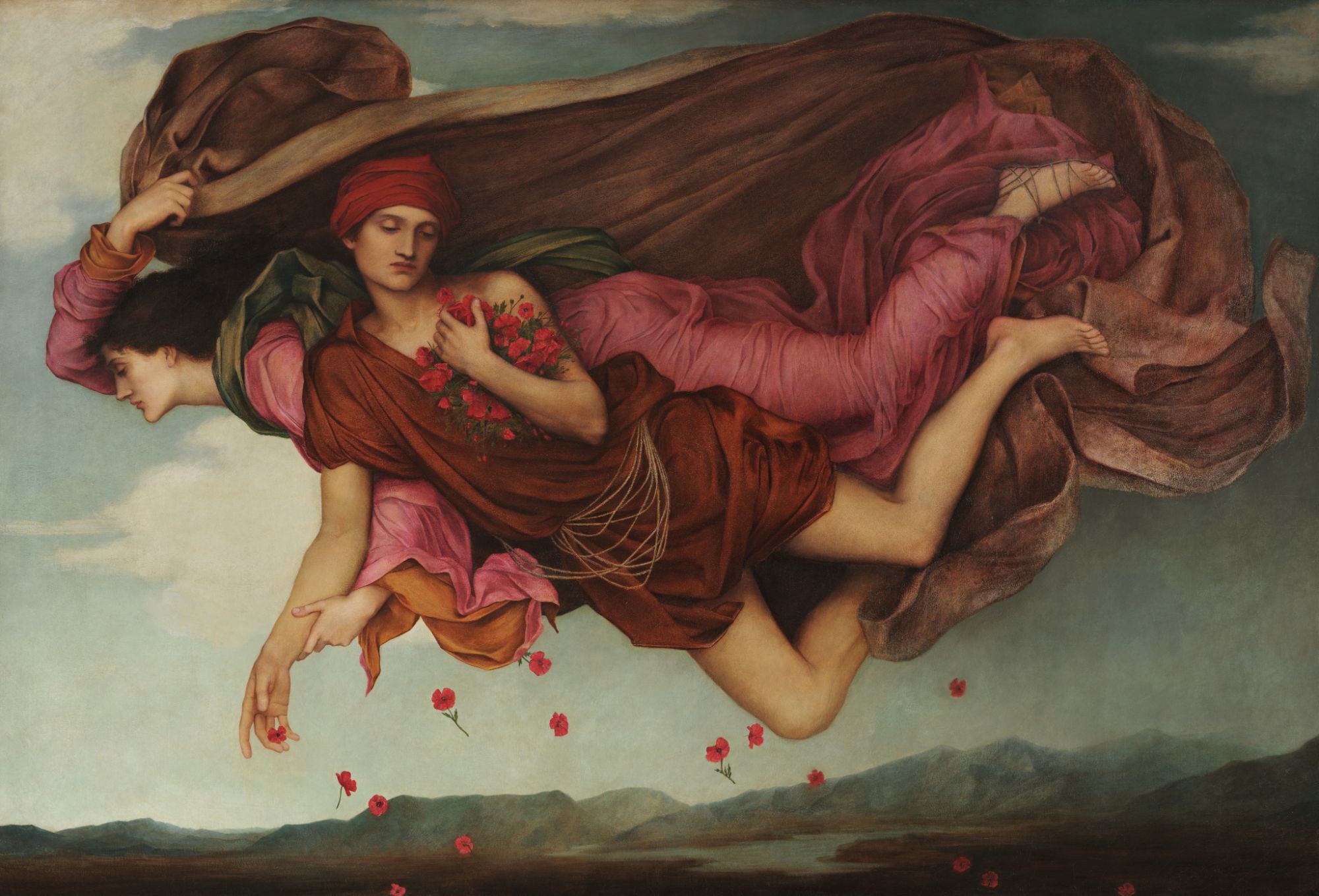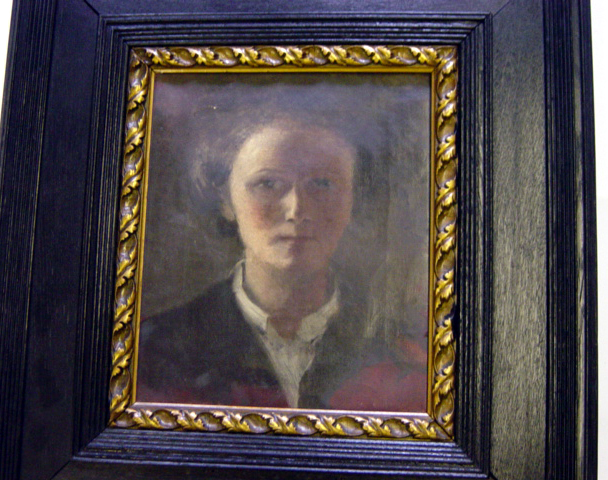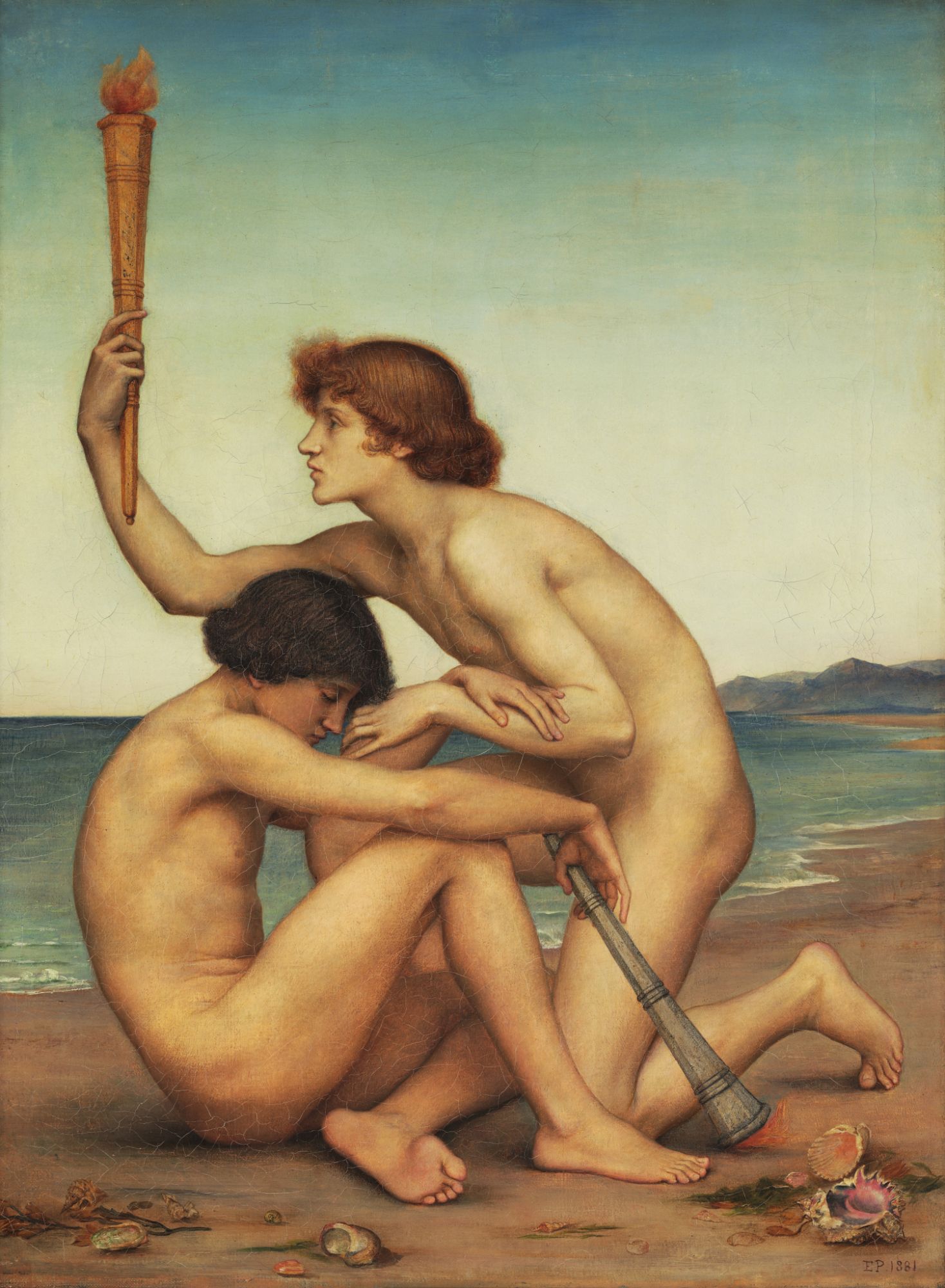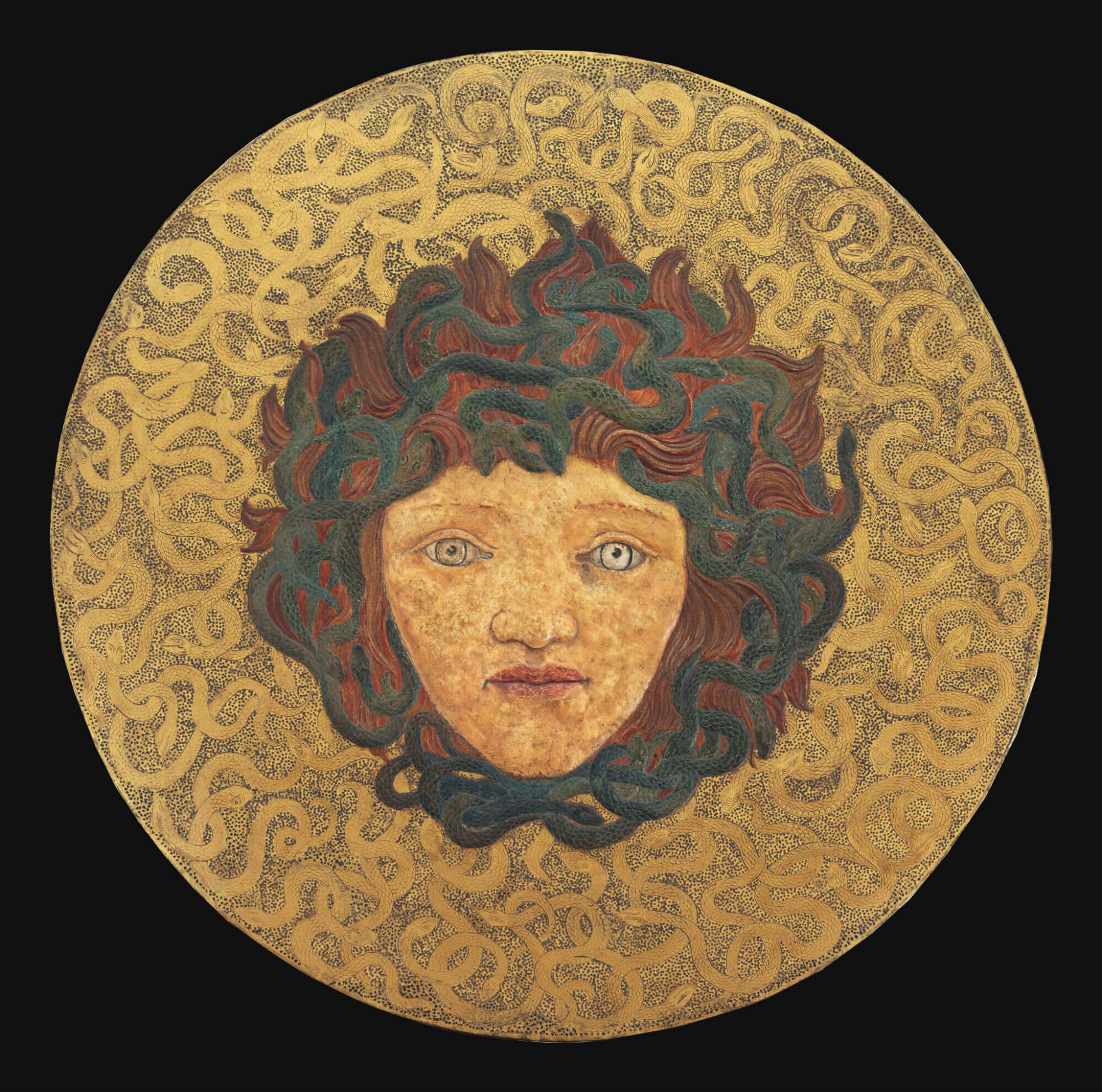Highlights in the De Morgan Museum
Night and Dawn
Night crouches at the bottom of the picture, as if about to sleep, her dark head pillowed on her hands, surrounded by the moon and stars and night sky. Above her rises the Dawn, in the shape of two young women, surrounded by the colours of the sunrise, and wearing golden diadems. The rays of the ri...
Boreas and Oreithyia
Evelyn continually revisited the theme of mythology during the first three decades of her working career, no doubt this was in part due to the theme being equally popular with the art market of the day. In this painting Boreas, the Greek god of the north wind, is represented as usual as a winged...
The Women of Sorrento Drawing in the Boats
This picture was presumably based on a scene that Spencer Stanhope had witnessed during a trip to Sorrento, situated on the North side of the Sorrentine Peninsula on the Gulf of Naples. This was, of course, far from his home outside Florence, and he is most likely to have gone there either on holida...
Night and Sleep
Night floats through the evening sky, his red robes reminiscent of the sunset, and his billowing cloak darkening the sky behind him. He floats arm in arm with Sleep, who gently scatters poppies onto the earth beneath, from the armful of flowers that he has taken from his girdle. (The Victorians used...
Self Portrait
William knew from a young age that he wanted to be an artist. This self-portrait was painted before he had any art training. Against the wishes of his father, the famous mathematician Augustus De Morgan, William had lessons at Cary’s art school, from the age of 19. He trained to draw antique sculpture in order that he would earn a place at the Royal Academy Schools. William’s drawings from this period are exceptional. William entered the Royal Academy Schools in 1859. However, he completed just four out of the mandatory eight years required to become a Royal Academician. Instead, he began a career in decorative arts by making stained glass alongside William Morris, who was a lifelong friend, before setting up the ceramic business in 1872. Conserved in 2019 with the aid of a grant from the AIM Pilgrim Trust Conservation Scheme
Phosphorus and Hesperus
This painting inspired by Greek Mythology depicts the Morning star (Phosphorus) and the Evening star (Hesperus) and alludes to the circle of life. Phosphorus is rising, his torch held erect, heralding the morning which is lightening the sky behind him. In comparison Hesperuss evening starlight is f...


